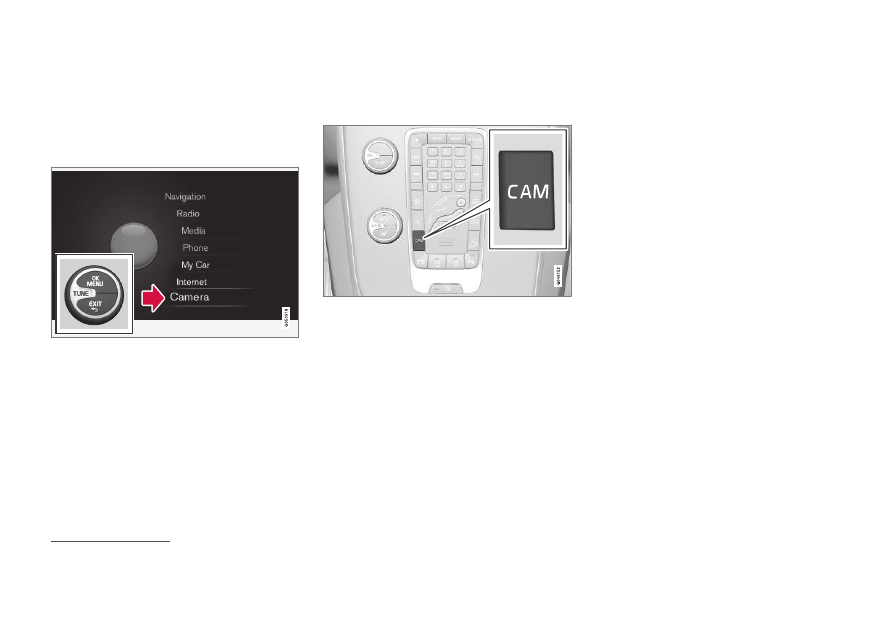Volvo V40 (2018 year). Manual - part 15

DRIVER SUPPORT
* Option/accessory.
262
Park assist camera - settings
Activate switched-off camera
If the camera function is switched off when
reverse gear is selected, it is activated in the fol-
lowing way:
Main source menu
38
.
1. Give one or two long presses on EXIT to
access the main source menu.
2. Turn to the "Camera" option with TUNE and
press OK/MENU.
3. In the following menu: - Turn to the desired
camera view with TUNE and press OK/
MENU - the screen shows the current cam-
era view.
Options*
Cars with the front camera option have a CAM
button on the climate panel.
Button location may vary depending on options for other
equipment.
•
Press CAM to activate the camera
- the screenshows the current camera view.
To change view between the reversing camera
and front camera:
•
Press CAM or turn TUNE.
Change setting
The default setting is that the camera is activated
when reverse gear is selected.
The settings for the parking camera can be
changed when the screen shows a camera view:
1. Press OK/MENU when a camera view is
shown - the screenchanges to a menu with
various options.
2. Turn to reach the desired option with TUNE.
3. Highlight the option by pressing OK/MENU
once and go back out with EXIT.
Towbar
The camera can be used to advantage when
hitching a trailer. A park assist line for the tow-
bar's intended "trajectory" toward the trailer can
be shown on the screen - exactly as for the
"wheel tracks".
A choice can be made between showing the
"wheel tracks" or the towbar's trajectory - both
options cannot be shown simultaneously.
1. Press OK/MENU when a camera view is
shown.
2. Turn to reach the
Tow bar trajectory guide
line
option with TUNE.
3. Highlight the option by pressing OK/MENU
once and go back out with EXIT.
38
See the Sensus Infotainment supplement for more information about the menu system.